In this Article
Toggle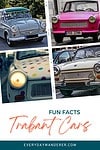
Like the Ford Model T or the Volkswagen Beetle, the Trabant (or Trabi) was the communist bloc’s version of a “people’s car.” Although it aspired to be affordable and practical for the masses, the Trabant often missed the mark. When the Berlin Wall fell in November 1989, the boxy, diminutive car became the symbol of the end of the communist bloc as East Germans piled into their Trabis and fled to the West. Here are other fun facts about Trabant cars.
Built in East Germany between 1957 and 1990, the Trabant looks like a real-life version of the cartoonish cars I scratch out during a spirited game of Pictionary. At about 11 feet long and under five feet wide, this family car:
- is about the size of a dining room table,
- has as much cargo space as a sports car,
- pollutes the environment like a gold-medal champion, and
- promises all the comfort of a middle seat in coach on a budget airline.
In part due to its starring role on the cover of U2’s Achtung Baby in 1991, the Trabant represents the fall of the Berlin Wall like no other icon. During the Cold War, factories produced more than three million of these cars.
While Germany may be most famous for engineering high-powered vehicles like BMWs, Mercedes, and Porsches, there are still about 58,000 registered, with most cruising the roads of Eastern Europe. Plus, one of the best tours in Berlin is via Trabi!
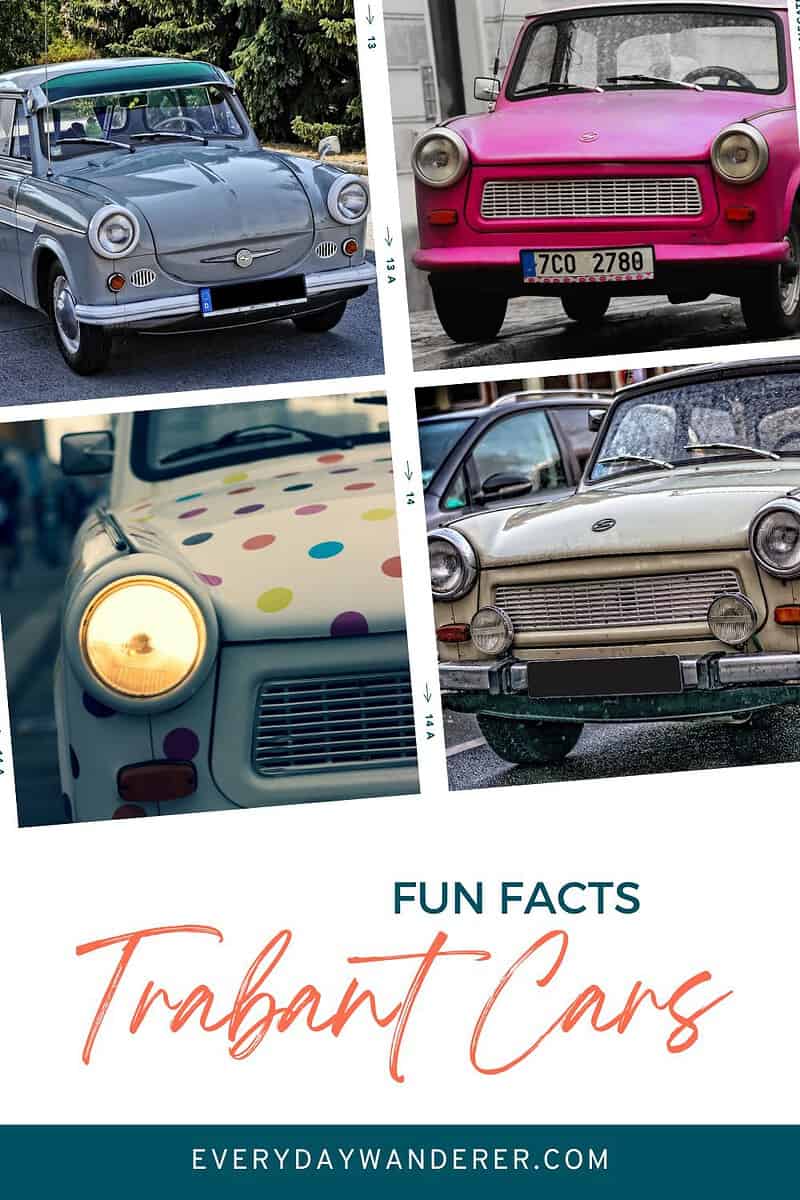
To help offset the costs of running EverydayWanderer.com, you’ll find affiliate links lightly sprinkled throughout the site. If you choose to make a purchase via one of these links, there’s no additional cost to you, but I’ll earn a teeny tiny commission. You can read all of the legal blah blah blah (as my little niece says) on the full disclosure page.
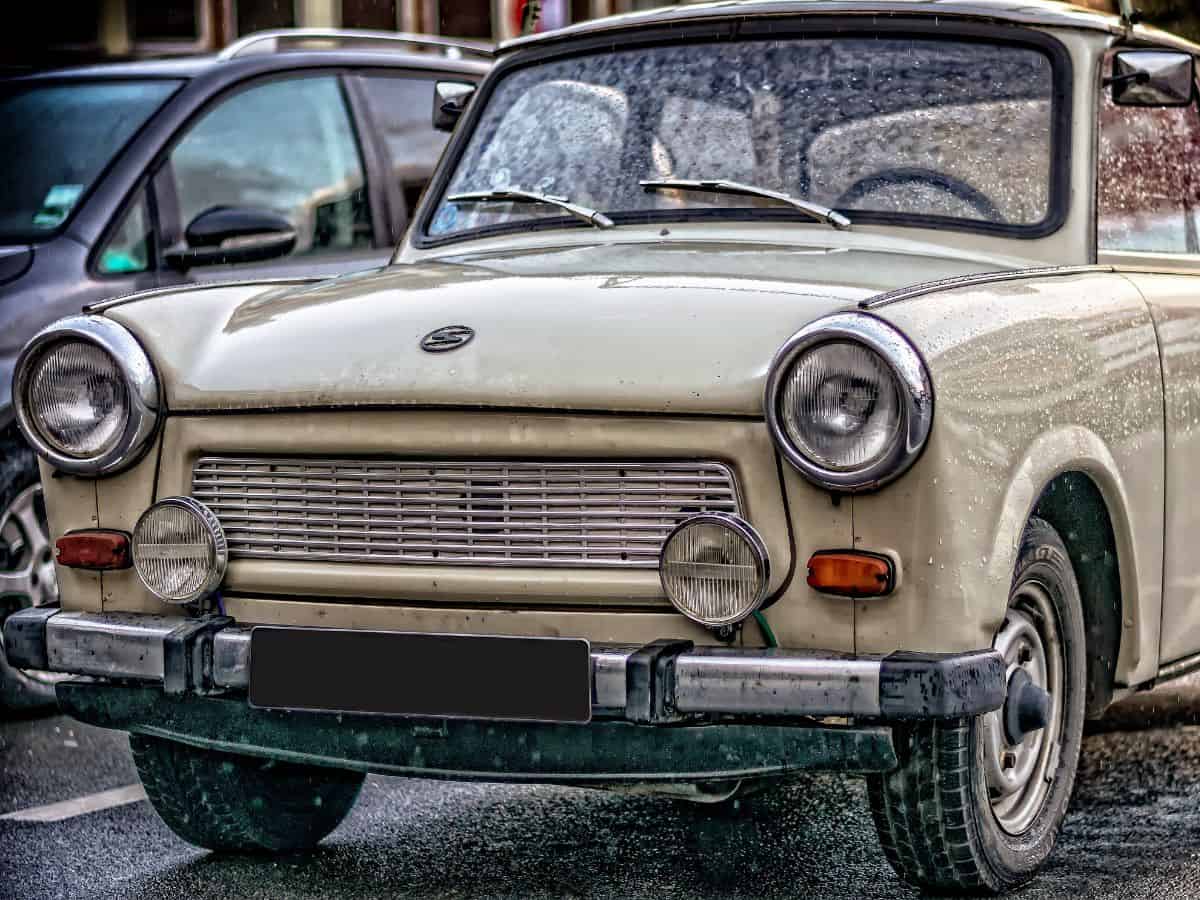
1. Trabant Cars Were Positioned as an East German Car “for the People”
Like the Ford Model T in the United States in the 1910s and the VW Beetle of post-war West Germany, the Trabi was East Germany’s version of a “people’s car.” Designers aimed to make the car affordable and easy for anyone to maintain with just a few basic tools.
Sage Advice: You may also see Trabi spelled Trabbi (with a double “b”), especially in Germany.
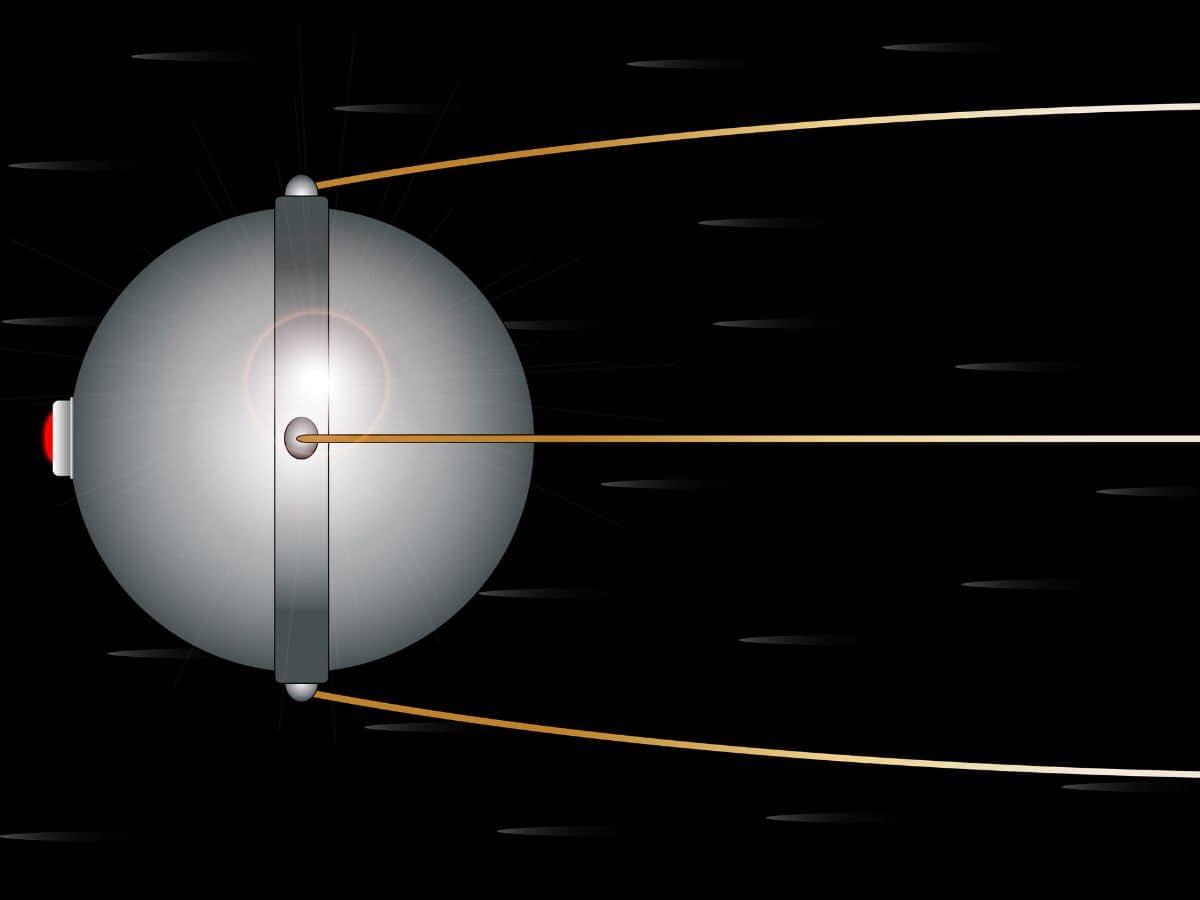
2. The Space Race inspired the Trabant’s Name
The German word trabant means “companion” or “fellow traveler.” Inspired by Sputnik, the Soviet satellite that orbited the Earth successfully the same year the first Trabi was sold, the name captures the era’s spirit.
3. Buying a Trabant Car Required Patience
While the Space Race may have inspired the vehicle’s name, there was no speed in acquiring one. In East Berlin, many families spent more than ten years on a waiting list to purchase a Trabi car. East Germans might wait as long as 18 years for the same opportunity outside that urban area. (That kinda makes the cable guy seem punctual, doesn’t it?)
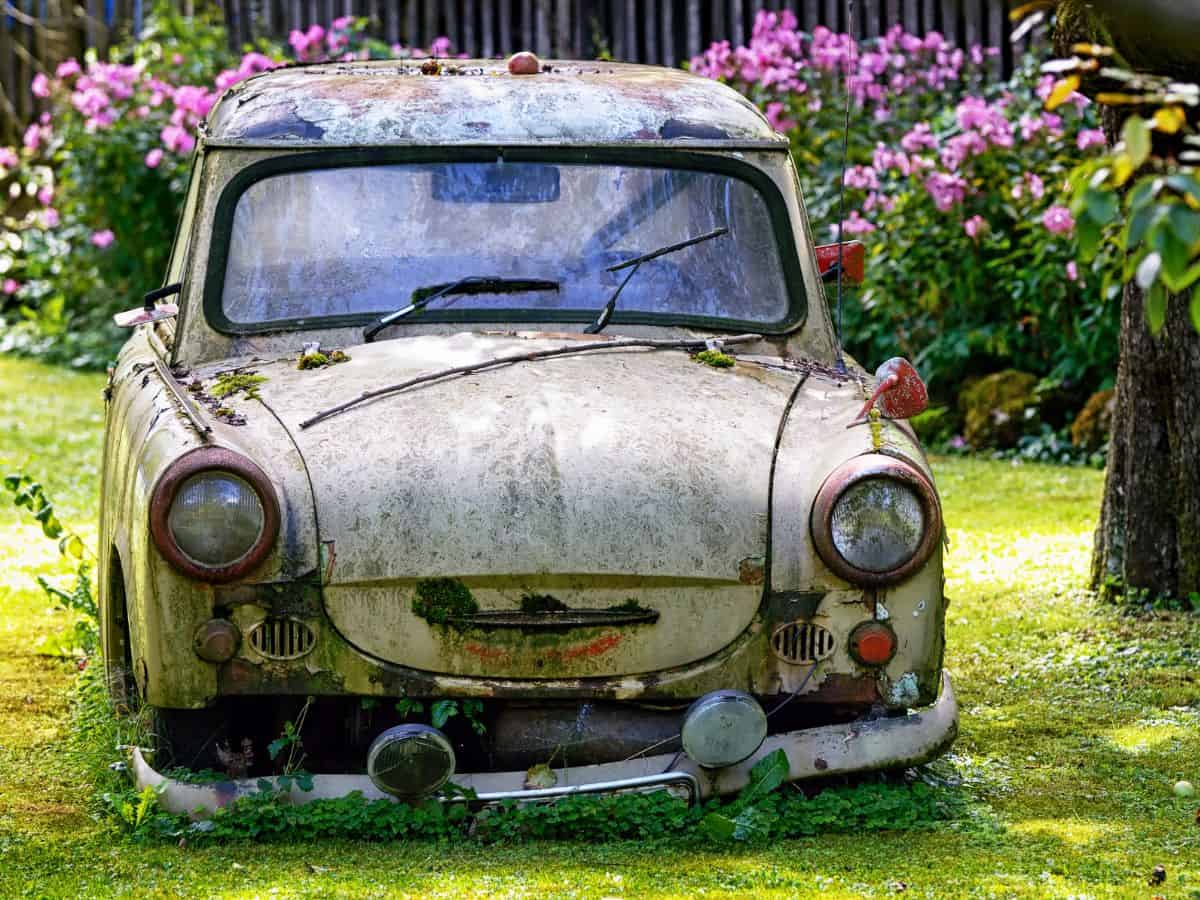
4. Used Trabis Cost More than New Trabis
In most markets worldwide, an automobile starts losing value the second you drive it off the lot. But the opposite was true for the Trabi cars. A brand new Trabant sold for 8,500 to 12,500 East German marks. Both East- and West German marks are obsolete (the now-unified Germany uses the Euro as its currency), but we can roughly convert the price of a Cold War-era Trabant to about $9,800 to $14,500 present-day dollars. While that may seem like a cheap vehicle, the average East German worker earned 13,680 East German marks annually, making a new Trabi the equivalent of a year’s wages.
And used Trabis were even more expensive, typically selling for 4,000 East German marks more than the cost of a new one. Why the price difference? East Germans were willing to pay more for a used vehicle since it was available immediately (and not in a decade). Can you imagine spending 30 to 50 percent more than a new model to acquire a 2013 Honda Civic?
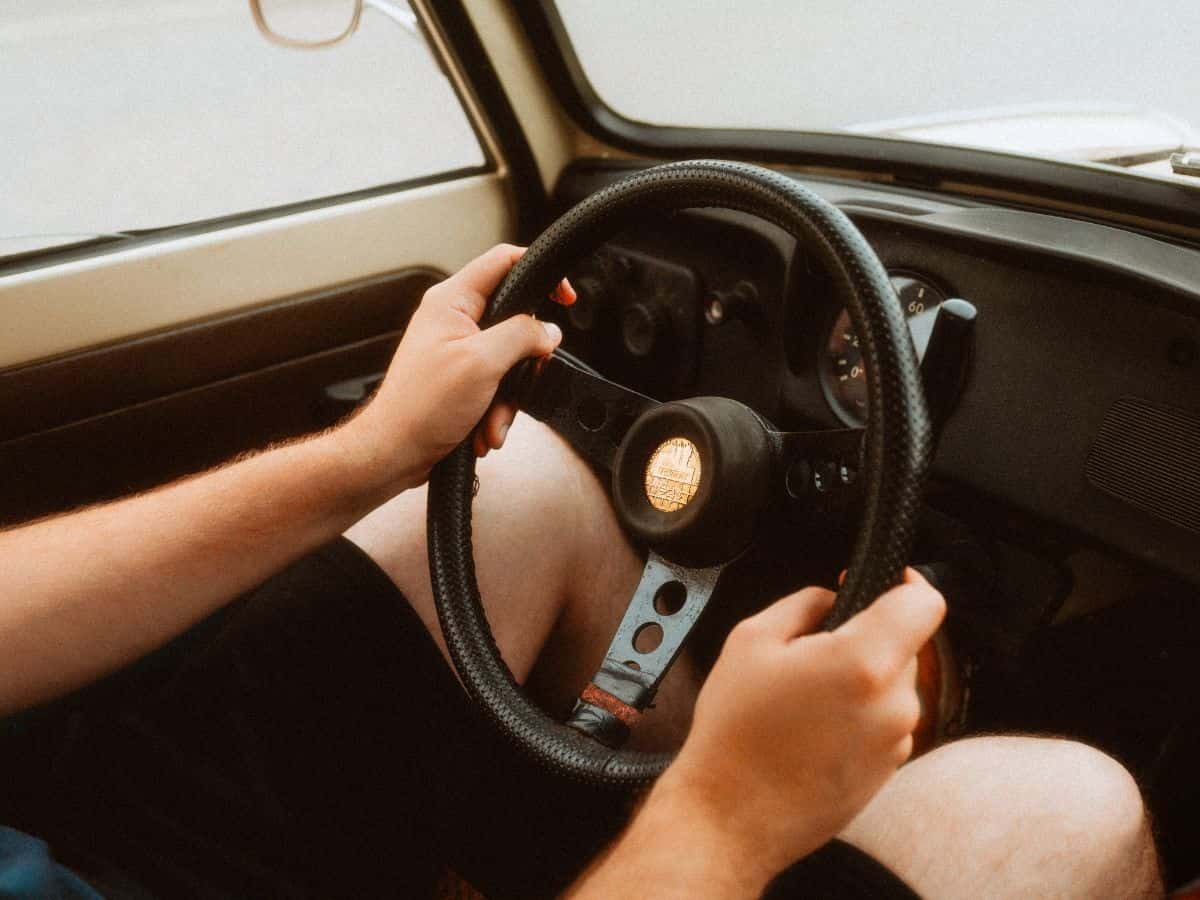
5. The Trabi is Not a Performance Vehicle (And You Don't Want to Know About its Emissions Standards)
A Trabant needs more than 20 seconds to go from 0 to 60 miles per hour. (In the United States, the average car can reach that speed in about eight seconds.) And it tops out at a maximum speed of 100 kilometers per hour (about 62 miles per hour). So, it’s probably good that authorities largely neglected the East German autobahns after World War II!
When the Wall fell in late 1989, East Germans packed as much as possible into their slow-moving Trabis and headed west. But because Trabis spewed nine times the hydrocarbons and five times the carbon monoxides of the average European car, the vehicles didn’t meet West German emissions standards. This meant that most Trabant drivers had to get special permission to cross the border, and West Germans often joked that Trabants “smoked like an Iraqi oil fire.”
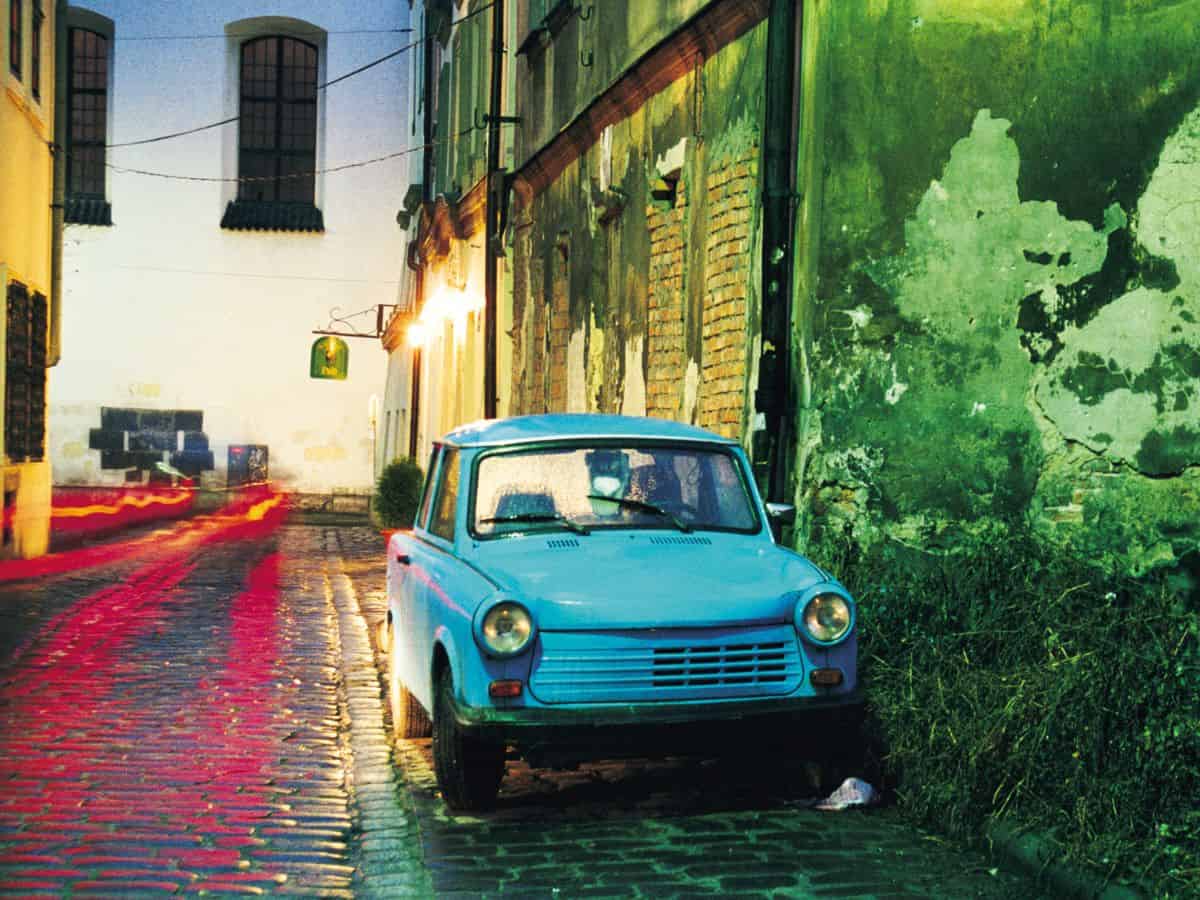
6. The Trabant Outer Body Isn't Made of Steel or Iron
While the Trabi features a steel frame, engine, and floor, a unique material forms its body. The East German government used a material called Duroplast for the car’s body to keep costs low. Although it sounds like an excellent name for a bandage, this hard plastic is made by mixing formica (commonly used for dishes and countertops) with bakelite (used to produce old-fashioned rotary telephones) and fortifying it with cotton fibers left over from the textile industry.
While Duroplast may not sound like the safest material to protect you in an accident, the Trabant did surprisingly well in crash tests, performing better than some modern hatchbacks.
Sage Advice: Learn more about how to (manually) squirt windshield wiper fluid onto the Trabi’s windshield, see how sexy the glovebox is (not), discover the secret way to lock the vehicle, and more in this YouTube video.
7. Russia Supplied the Steel Used in the Trabant
Due to the high cost of importing steel from Russia, Trabant designers concentrated most of it on the car’s frame, engine, and floorboard.
8. The Original 1950s Design Didn’t Change Much Over the Years
Most car models changed considerably from the 1950s to the 1990s, but not the Trabant. As a result, the Trabant 1.1 produced in 1990 still looked a lot like the original 1950s design of the Trabant 500.
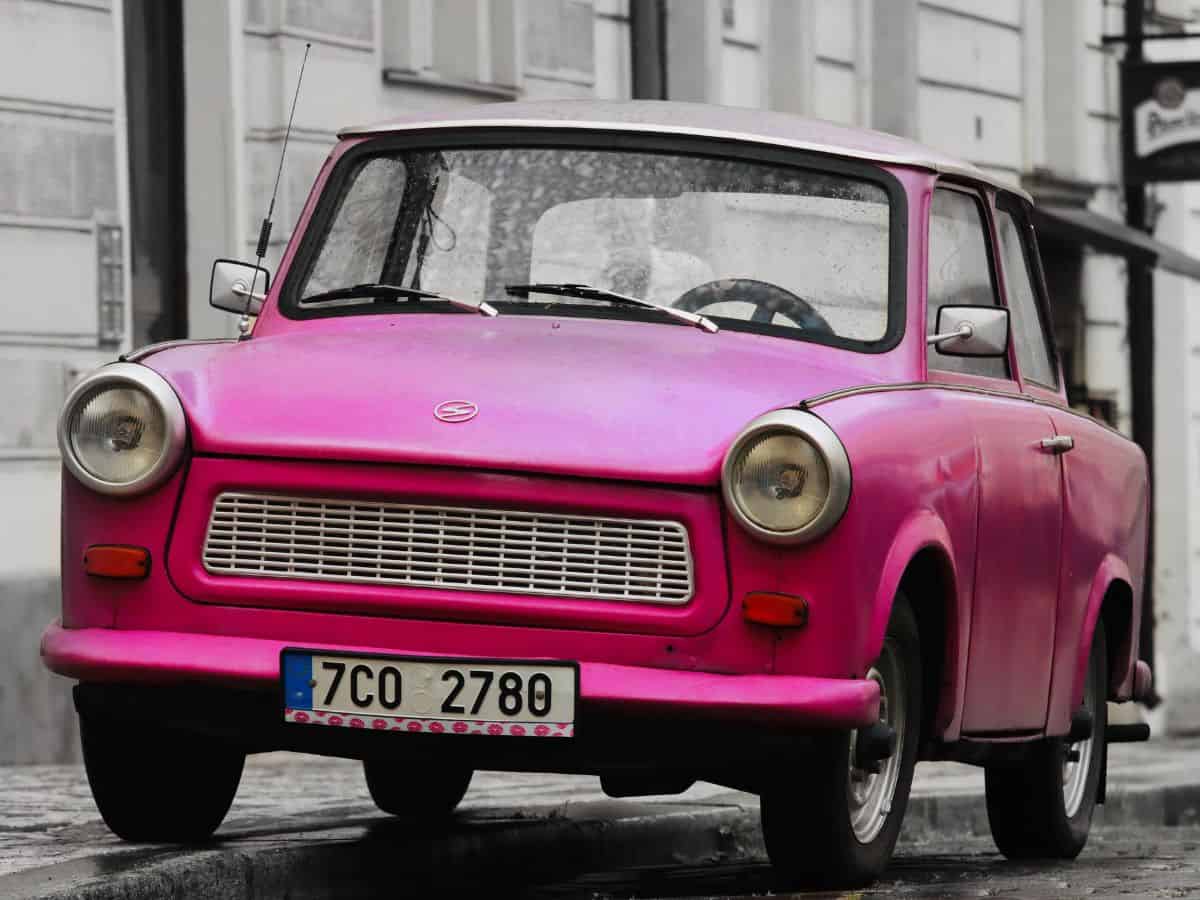
9. In Addition to Trabi, the Iconic Car had Several Other Nicknames
The inexpensively produced car made in Zwickau, Saxony, about 200 miles southwest of Berlin, was also known as the “plastic bomber” and “Saxon Porsche.” It’s also called a “spark plug with a roof.”
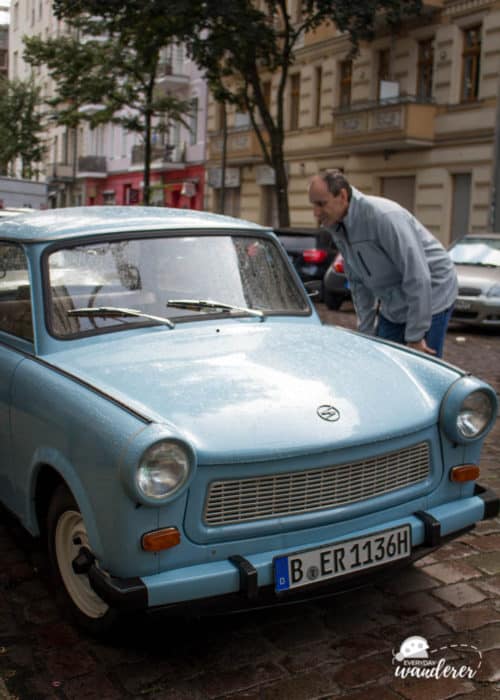
10. Filling Gas in a Trabant Takes a Special Talent
When it’s time to refuel a car, most drivers’ biggest challenge is determining which side of the vehicle the fuel hatch is on. But gassing up a Trabant car is much more complicated. First, there’s no fuel hatch, meaning drivers must lift the hood and pump gas directly into the tank. Thankfully, there’s no fuel pump, so the gas tank is on top of the engine.
However, since a two-stroke, two-cylinder engine powers Trabant cars, drivers must mix a special oil with the gas and shake (not stir) the two liquids, ensuring they are as smooth as James Bond’s martini.
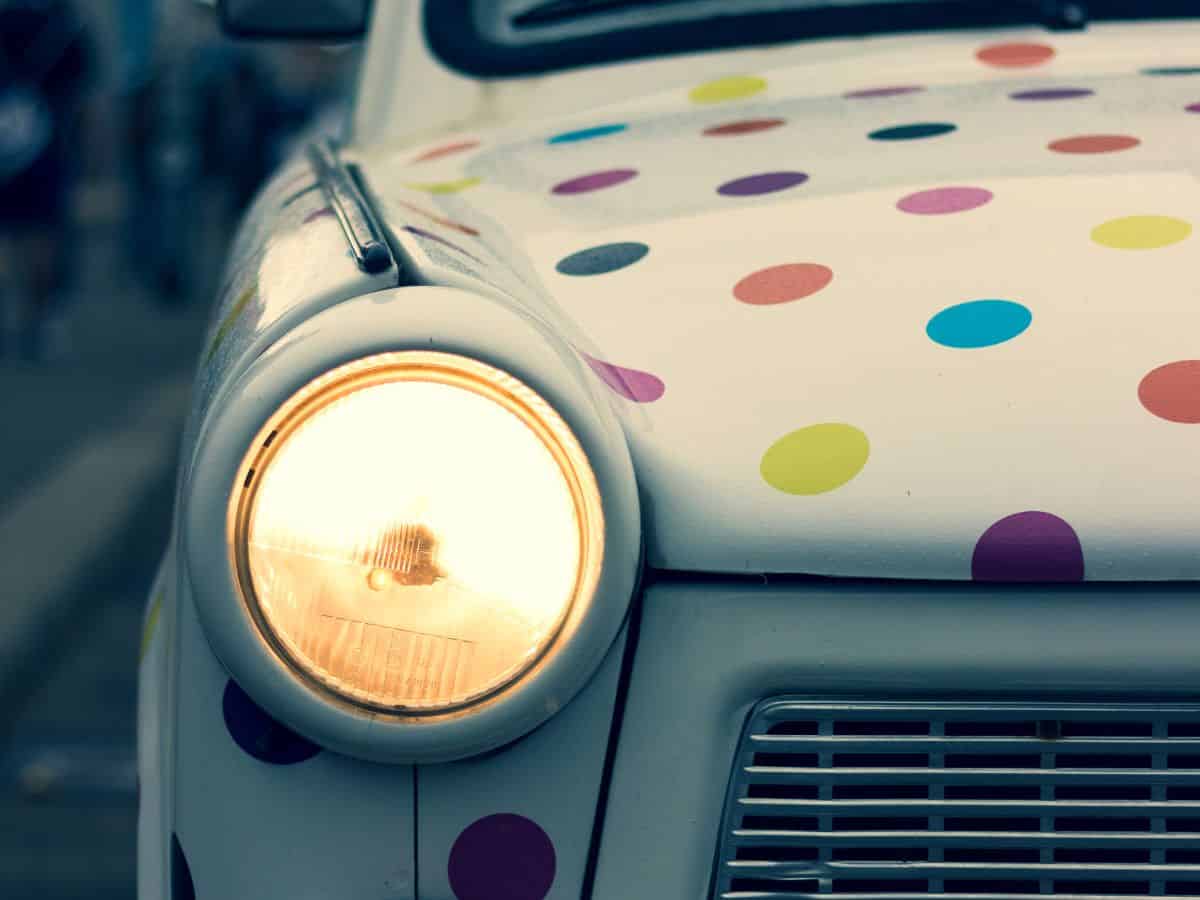
11. Trabants Have No Fuel Gauge
After mastering the fine art of filling a Trabi’s gas tank, you face the added challenge of monitoring the fuel level. Why? Because, unlike most vehicles, Trabants have no fuel gauge inside the car. So, the only way to determine how much juice is left in the gas tank is by manually checking the fluid level with a dipstick – similar to how folks check oil levels in cars today.
12. Trabants Were No-Frill Vehicles
And I’m not talking about frills like drink holders and cigarette lighters! In addition to having no fuel hatch and no fuel gauge, the Trabant 601 (a 1980s model) had no tachometer, no turn signal indicator, no headlight indicator, and no rear seat belts.
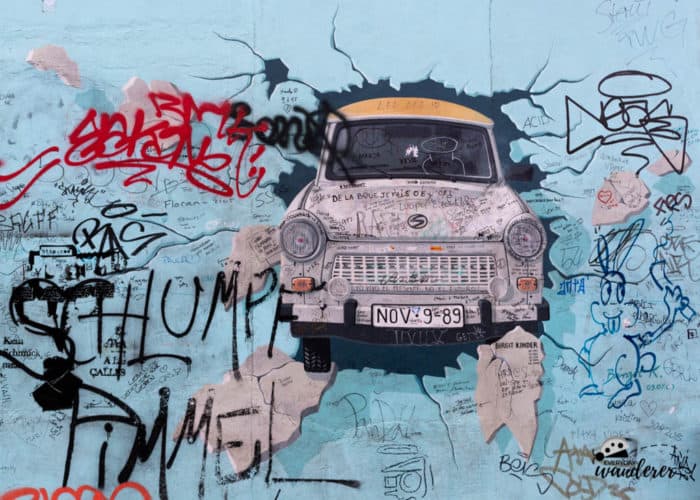
13. You Can Find the Cult Cars in Pop Culture
In addition to gracing the cover of U2’s Achtung Baby album, Trabis are also prominently featured at the East Side Gallery, a painted memorial along the longest remaining stretch of the Berlin Wall.
The mini vehicle also played a leading role in Go, Trabi, Go, a comedy featuring an East German couple road-tripping to Italy in their Trabi for vacation. And in case one Go, Trabi, Go movie isn’t enough, there’s a sequel – Go, Trabi, Go 2. You can also tour Africa in a Trabant car by watching Trabant Goes to Africa.
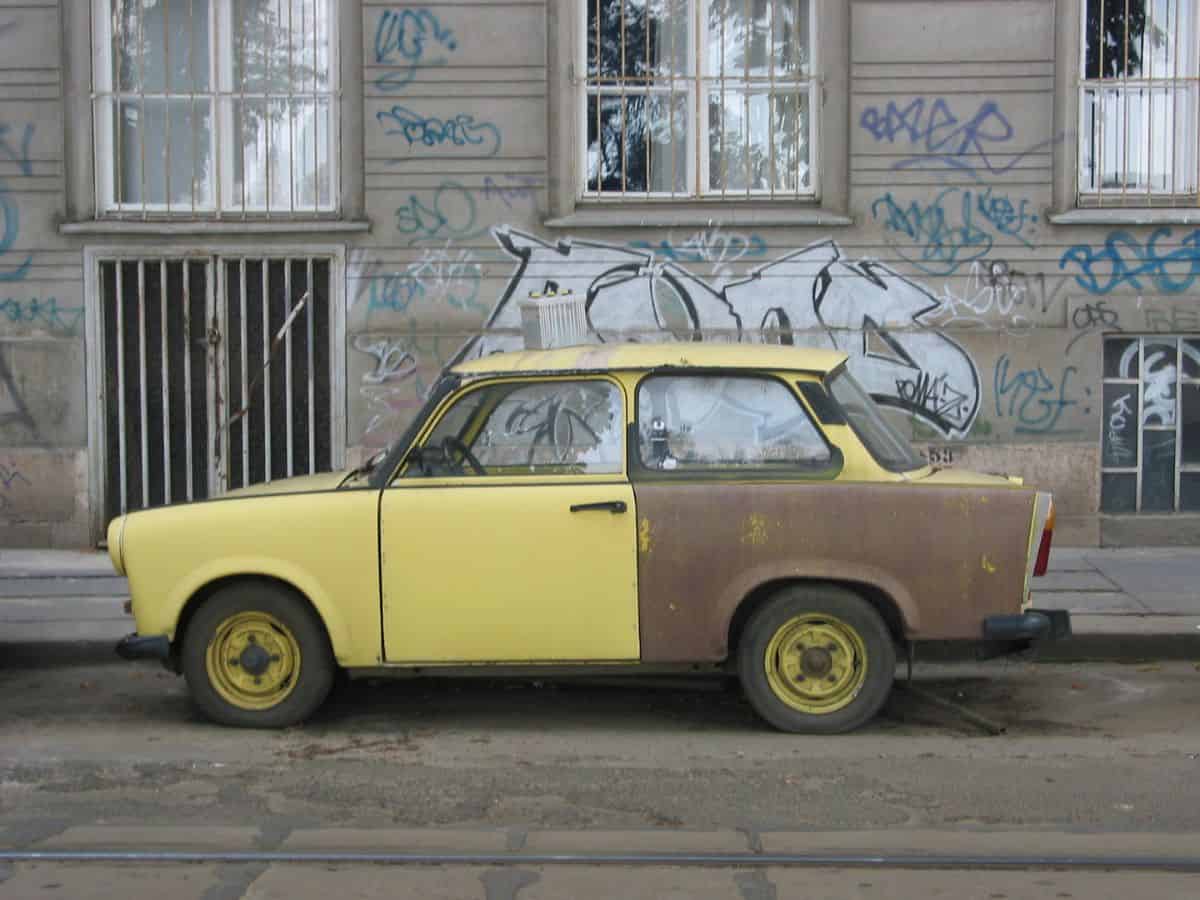
14. You Can Still Experience Trabant Cars in Europe and the US Today
Although it’s been nearly 30 years since the last Trabi car rolled off the production line in East Germany, you can still see Trabants in Europe and the United States. Berlin is home to the Trabi Museum, an experience dedicated to the quirky Communist-era cars. And the Caen Memorial in France has a Trabi car on display next to a chunk of the Berlin Wall in its “The World after 1945” exhibit that depicts life in Europe during the Cold War.
Additionally, nearly 60,000 registered Trabis still drive on the roads today. From Berlin to Budapest, you can tour select European cities in a Trabi. And in the United States, don’t miss the annual Parade of Trabants hosted by the International Spy Museum in Washington, DC.
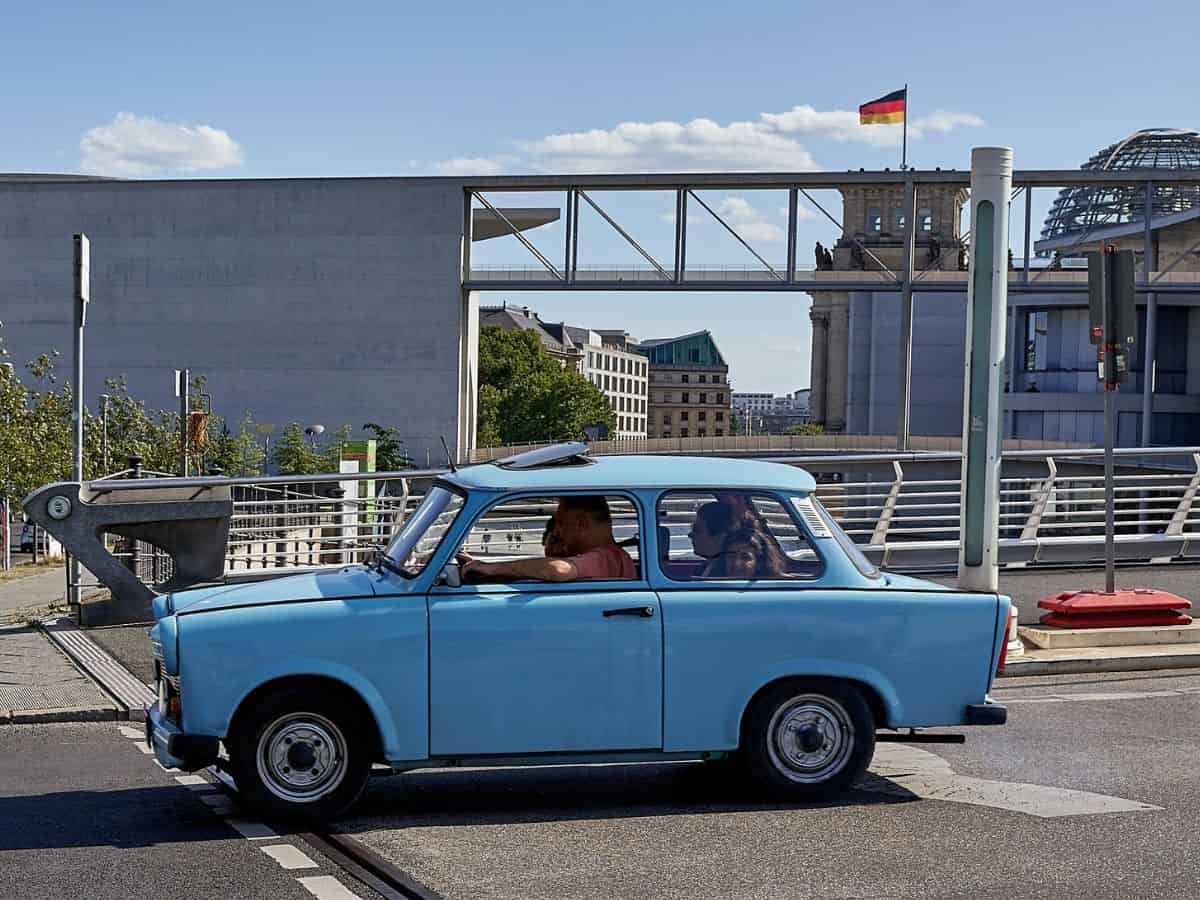
Frequently Asked Questions About Trabant Cars
What is a Trabant?
Trabant is a series of small cars produced in East Germany from 1957 to 1990. Affectionately called Trabis, there were four different models of these small vehicles: the Trabant 500, Trabant 600, Trabant 601, and the Trabant 1.1.
What does Trabant mean?
The Trabant car’s name originated from the German word drabant, which means “companion” or “fellow traveler.” It was inspired by Sputnik, the Soviet satellite that successfully orbited the earth in the year that the first Trabi was sold.
Where was the Trabant made?
Trabants were manufactured in Zwickau, Saxony, about 200 miles southwest of Berlin, by German car manufacturer VEB.
What were Trabant cars made from?
Trabants feature a plastic body around a one-piece steel frame known as a unibody. The bulk of the rest of the car, including the roof, hood, trunk, and doors, was fashioned from a fiber-reinforced plastic similar to Formica, Bakelite, or fiberglass.
How much did a new Trabant car cost?
When East Germans lived behind the Iron Curtain, a brand new Trabant sold for 8,500 to 12,500 East German marks. Converting this now-obsolete currency from its 1989 value to today’s dollars that’s about $9,800 to $14,500.
How to drive a Trabant
It’s not as simple as you might think! From its four-speed manual transmission to its confusing shift pattern, you can learn more about what it’s like to drive a Trabant here.
How fast can a Trabant go?
Trabants need more than 20 seconds to reach 60 miles per hour from a complete stop. And once you get pedal to the metal in one of these cult cars, you’ll find that it tops out at a maximum speed of 100 kilometers per hour (about 62 miles per hour).
Are Trabants legal in the USA?
The short answer is yes, but the longer answer is full of specifics. This guide to importing and buying Trabants provides a lot of those details.
Have You Seen, Driven, or Ridden in a Trabant Car?
Where did you see the Cold War-era car? What was it like to step inside the small, plastic vehicle? Are there any other Trabant fun facts you’d add to this list? Share your experiences in the comments section below.

Looking for more information to plan your Germany vacation? Check out my additional recommendations to help you plan your trip to Germany including what to see and do in Germany, the best places to stay in Germany, where to eat in Germany, and more!
Ready to Go?
Use These Helpful Links to Book Your Trip!
- Find low fares with airfarewatchdog and Skyscanner
- Book your plane ticket with Expedia or Kayak
- Or take the scenic route on an epic road trip in a rental car or an RV from Outdoorsy
- From hotels to private homes, find the perfect accommodation with Hotels.com or Vrbo
- Travel in style with a suitcase, carry-on, backpack, or handbag from eBags
- Save on tickets to attractions, sightseeing tours, and more with CityPASS, Tiqets, and Viator
- Don’t leave home without travel insurance from AXA
- Discover the sights, history, and culture of your destination with an interactive scavenger hunt
- Need something else to plan your perfect trip? Visit my travel resources page for more trusted partners. Happy wandering!
Thank you for sharing!

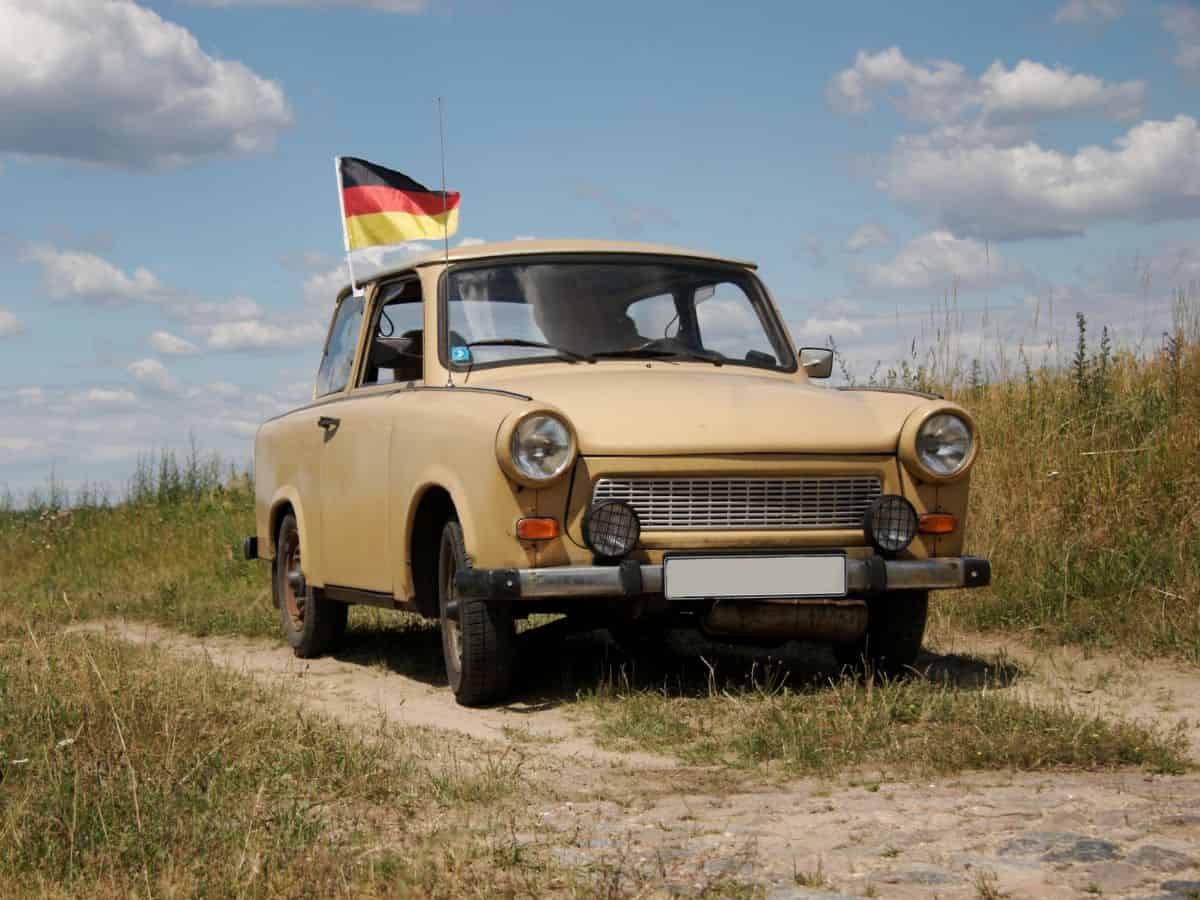


My son is a huge fan of cars so I love to find him interesting facts of different cars. He really loved this cool trivia about Trabant cars. We really enjoy your other posts on your site about history. Thanks so much!
Trabants are one of the coolest, yet quirkiest, vehicles on the road today!